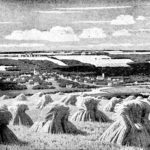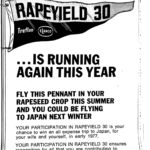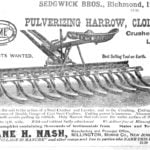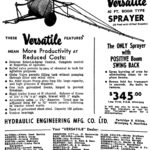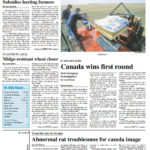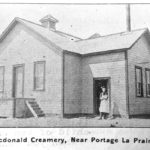This photo of an F.H. Brigden painting titled “Assiniboine Valley” appeared in our May 1944 issue. A story said, “Lads from the Prairies” could view reproductions in the barracks, messes, libraries, hospitals and reading rooms where they were stationed overseas. The idea was sponsored by the National Gallery and the Department of National Defence and



